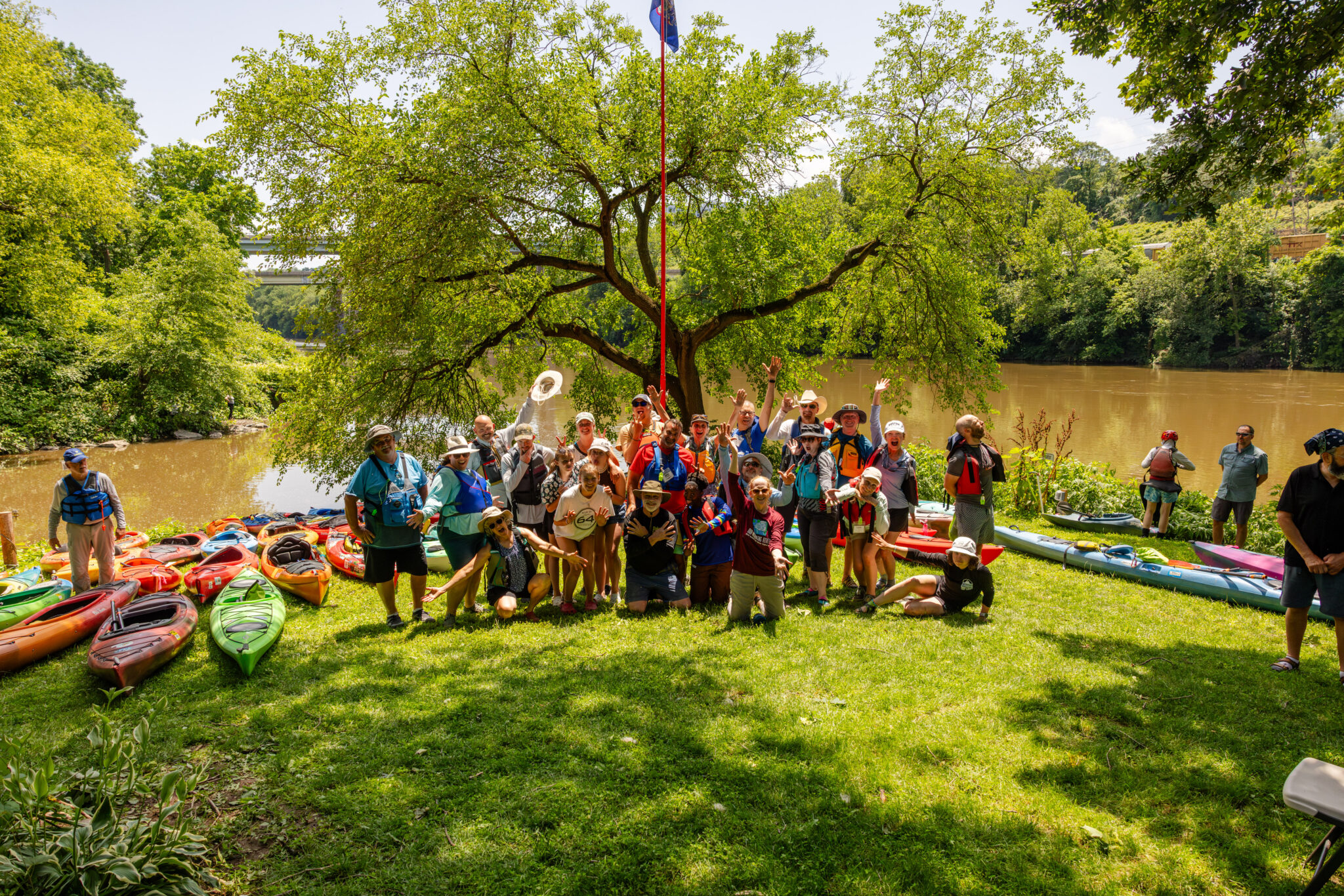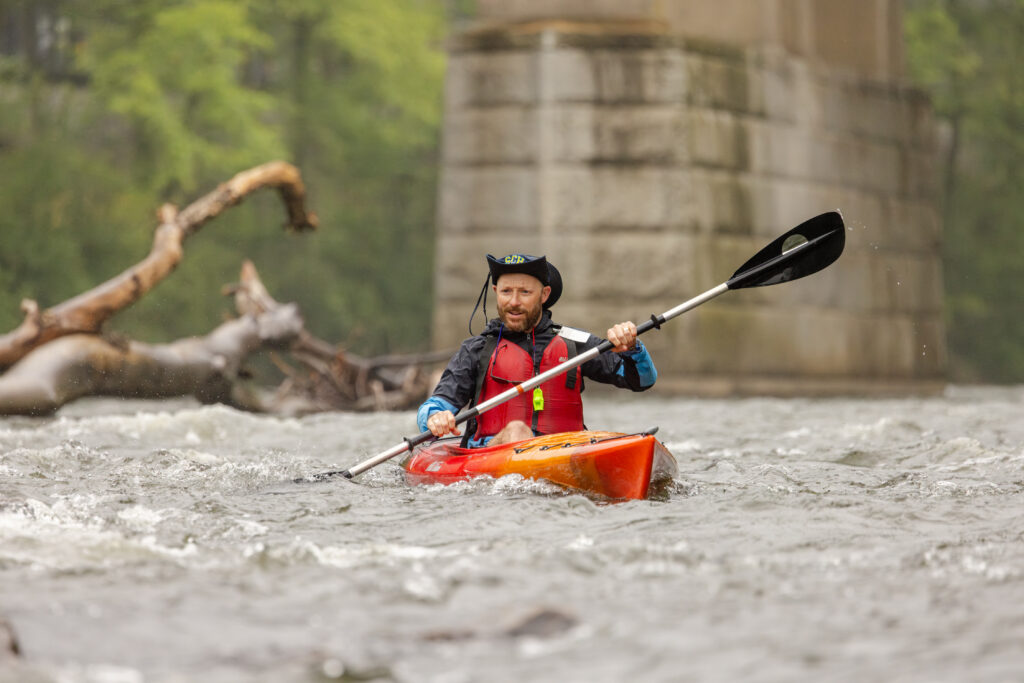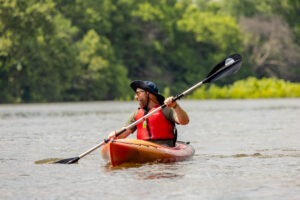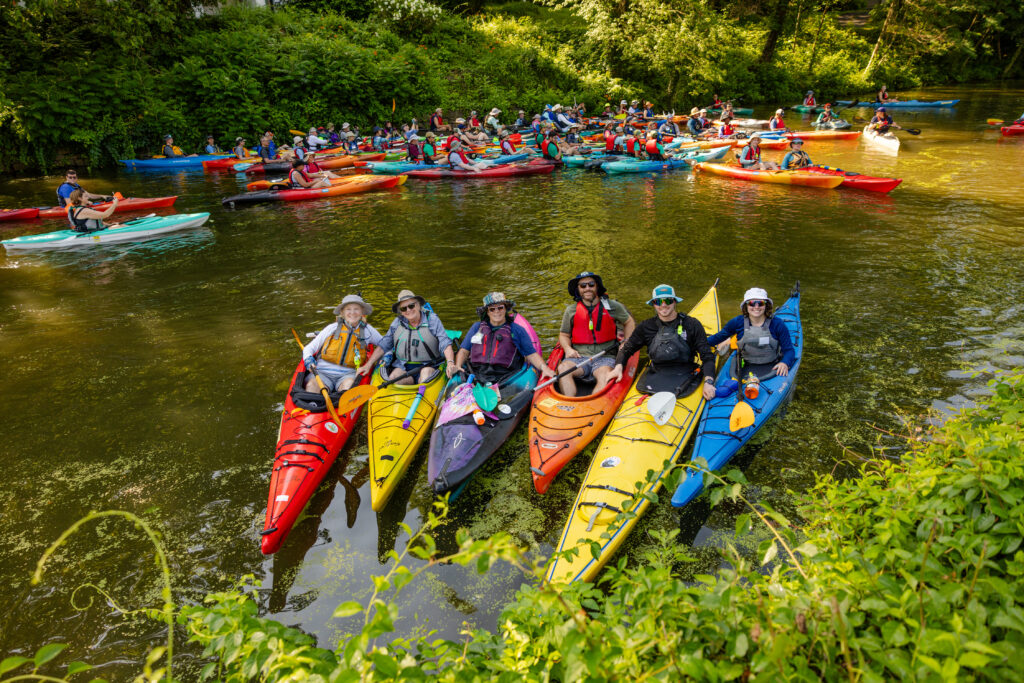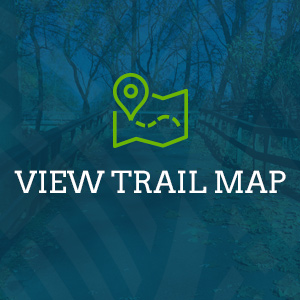Into the Hidden River
Into the Hidden River by Brian Zalasky
Jon Krakauer’s 1996 book “Into the Wild,” explores the late Chris McCandless’s belief in the natural world and its transformative power, especially after being disillusioned by society and even the people closest to him. In the early 1990s, after giving away nearly all of this money and possessions, a young McCandless walked into the Alaskan wild to find his truest sense of self, never to return. I teach this book during my Advanced Placement English classes at Springside Chestnut Hill Academy in Philadelphia. Some of my students see McCandless as an admirable wanderer; others see recklessness. What I remind my students is that we need to do our best to empathize with McCandless’s worldview and value system of nature before civilization and experiences over money. The best way I found to do this is to share my experiences to show them how someone they trust empathizes with others.
This year, when the Schuylkill Action Network changed its Schuylkill River Sojourn Steward program to a Sojourn Scholar to open it up to teachers, I decided to demonstrate this empathy in action, and joined the 27th Schuylkill River Sojourn as the Sojourn Scholar. I put myself in a situation I’ve never been in before, connecting with people I didn’t know, climbed into a kayak and paddled into the Schuylkill River.
So often ridiculed for being a polluted mess, the Schuylkill’s environment is one of natural beauty. Under the seemingly protective arms of oak, catalpa, knot weed, and mountain laurel is a rich ecosystem of herons, eagles, and turtles that obscures the river from much of the rural, suburban, and urban landscape. It’s no wonder the Pennsylvania Dutch gave the Schuylkill a name that means “hidden river.” Also underneath the canopy was, yes, the occasional tire, sun-bleached volleyball, and baby stroller; yet, we learned about the effort to bring the watershed, specifically the Manayunk Canal, back to its pre-Industrial Revolution days before the river became the silty bloodstream of America’s anthracite coal trade. It’s a microcosm of what’s happening in the watershed, and essential for the nearly 2 million people who get their drinking water from the Schuylkill.
Rain led us to experience the river’s Lenape name, Ganshowe-hánne, or “roaring stream.” The chutes, a low-head dam built into the base of a railroad bridge just southeast of Auburn, did a particular number on our group of 120 paddlers, with about a third of folks “going for a swim,” an apparent record according to veteran Sojourners (yours truly definitely ate it.). The high water created natural obstacles like strainers, which snagged Katy, an experienced paddler and second-year Sojourner. With the help of others, including Bigfoot, a guide from Take It Outdoors (TIO) who bravely and expertly pulled her out of the ripping water, Katy was able to walk away, albeit quite gingerly, with a lacerated toe and a mild case of hypothermia. She was back in her kayak two days later.
Katy’s episode highlights something more than the power and potential danger of nature. It put on display a reassuring (and reaffirming) trust in my fellow human beings. Regardless of whether they were Schuylkill River Greenway (SRG) staff, TIO guides, or Sojourn compatriots, the care that everyone showed her was deep and authentic. Offers of food, phones, clothes and car rides were plentiful. So were stories of commiseration and jokes, both of which we all know can also bring the truest comfort in times of trial and fear. Even TIO medic Hippie Ray’s daily check-ins with Katy were nominally about redressing the wound on her toe; really, they were opportunities to ground one another in the beauty of the moment before them: a chance to, as Brianna, another second year Sojourner, put it, “to separate ourselves on this trip from all the [stuff] going on in the [world]… no cell phone to distract you, no [social media] feed in front of you.” It’s a community that quickly welcomed me along with 23 other first-time full-week Sojourners: a mother and her adult son, a family of five, a few teachers, a handful of divorcees, a young couple, a pair of old friends, a TIO guide, a retired firefighter turned school bus driver, a recent college graduate, and a widower. It’s a community that doesn’t ask “What are you doing here?” but listens with openness when you’re ready to share.
That spirit of genuine community in action extended throughout the trip. Folks lent their energy at every portage, their gear at each campground, their understanding of the waterway. First-time kayakers were welcomed by the expertise of seasoned Sojourners. Quickly, this first-timer was relaxed in their kayak, back slightly arched, eyes staring up at the kaleidoscopic canopy of leaves as the peeking sunlight refracted down through branches and up off the river, thinking, “this is so cool. I’ve never done anything like this before.” For those invested in the Schuylkill River Greenways, I think seeing the river through the first-timers’ eyes is one thing that brings them back time and time again.
It is also a community that honors the many benefactors, volunteers, and individuals who make the Sojourn so special year after year. Chief amongst these people was Dan Daley, the kilted tender of Lock 60 in Phoenixville who welcomed the Sojourners from its inception. He passed away earlier this year. Daley would orate the history of Lock 60 from high above the Sojourners as they waited in their kayaks in the canal below. The reverence with which folks spoke about Daley was undeniable. Several times I heard these reveries being shared with his wife, who carried on the tradition of welcoming the Sojourners this year. And, as is fitting with the Sojourn community, as well as Daley’s being a Navy man, a sailor, and lover of history, they wrote a version of the sea shanty, “A Drop of Nelson’s Blood” for Daley, which was then sung by all of us on the morning we set off from Lock 60. Well, a wave to the locktender wouldn’t do us any harm / and we’ll hang on behind him … well, an ice cold beer wouldn’t do us any harm, / and we’ll hang on behind him… well, a portage to the river wouldn’t do us any harm, / and we’ll all hang on behind him. It was a sincere and poignant moment, at which Daley’s wife was also present, and seems to culminate for me what makes the Sojourn so special. The community clearly knew Daley, what made him tick, and how to best share it in a way that gave even me, someone who never met the man, a feeling of remorse for having missed out on his company.
Near the end of “Into the Wild,” Krakauer surmises that McCandless probably realized that his pursuit of a truer sense of self in nature while rejecting much of society was somewhat misguided. Found with McCandless was a copy of “Dr. Zhivago” with an annotated passage that said, “HAPPINESS ONLY REAL WHEN SHARED.”
This year’s Sojourn theme was Canals and Campfires which emphasized the 200th anniversary of the Schuylkill Navigation System and the typical end of each day at the campground (weather permitting, that is). When thinking about our experience, the theme speaks to the lure of the Sojourn: It’s a connective quality, akin to that of canals and locks, linking familiar and disparate people alike, near and far, through stories shared in a circle with or without a campfire at its center. What is consistently at the center of these circles–which are always ready to be opened further–is a group of Sojourners who are empaths, wanting the share their love of being in the “hidden river,” the community made in the watershed along its banks, and the happiness that flows continuously year after year.
